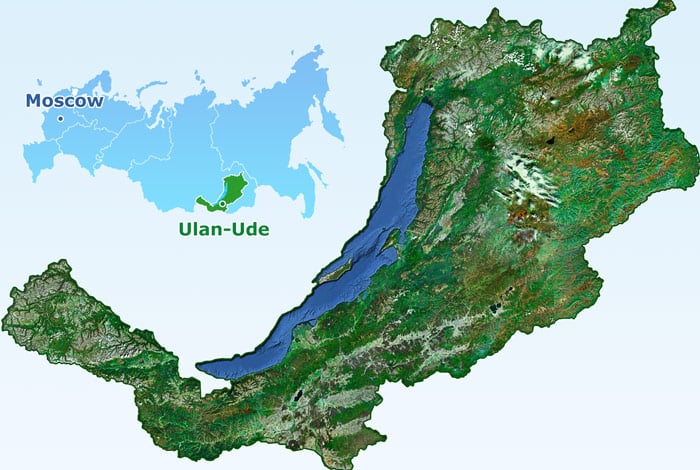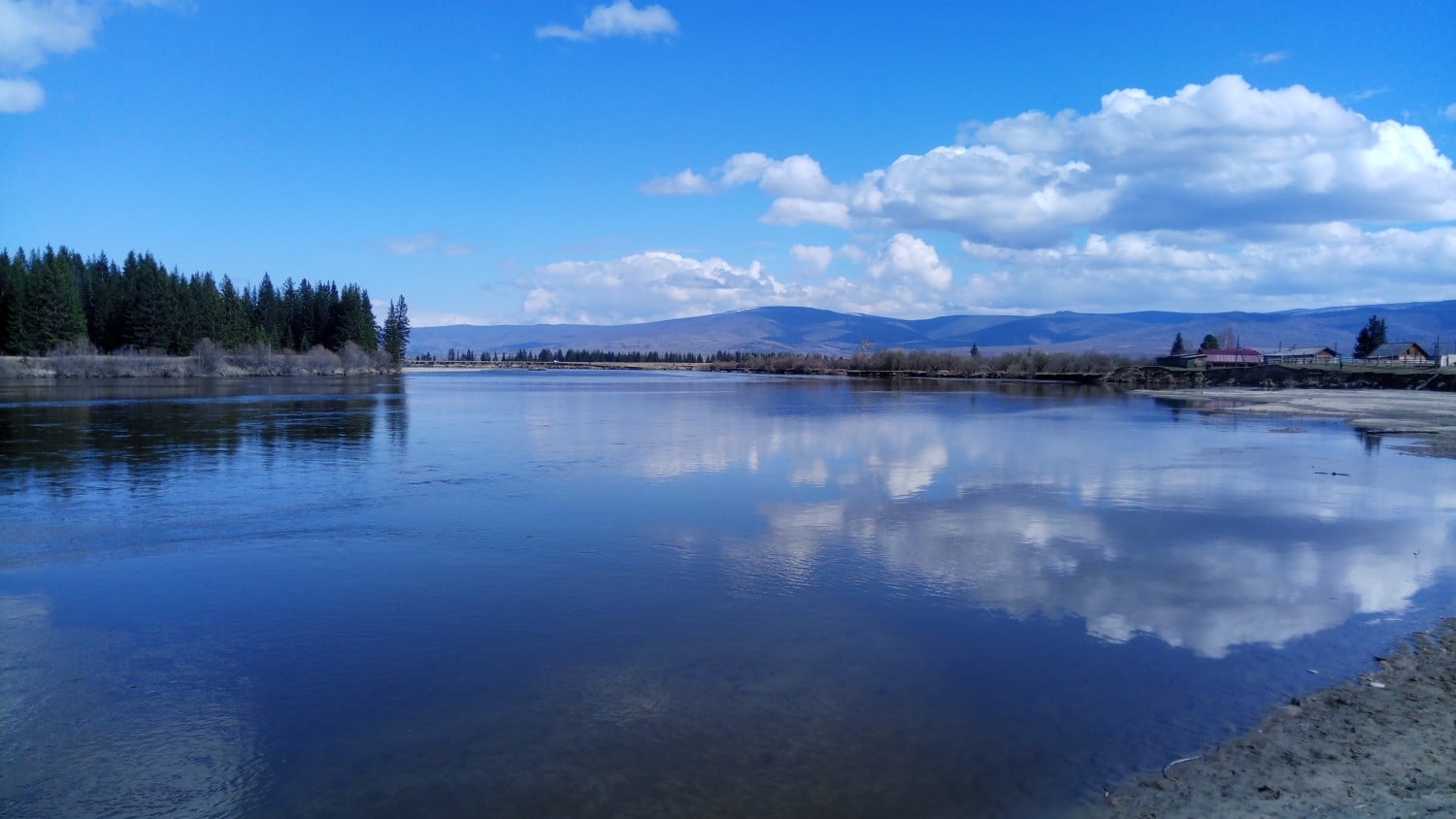
The Republic of Buryatia is located in South Central Siberia sharing Lake Baikal with Irkutsk Oblast. Roughly 500,000 people identify as Buryat making the Buryats the largest indigenous group in Siberia. The Buryat people are descents of several different ethnic groups including Mongolian and indigenous Siberian. Because of this, Buryat culture is an interesting and diverse mix of many cultures. In 1923 Buryatia became an autonomous republic within the USSR and remains so under the Russian Federation. The economy within Buryatia is dominated by agriculture and food – including fishing, hunting, and livestock. While Buryats can be found all over Russia, the majority can be found in the Republic of Buryatia and its capital, Ulan-Ude.
SRAS Challenge Grant writer Alaina DeLeo spent time traveling Buryatia and meeting Buryats there and in Irkutsk, where both she and they were studying over the 2017-2018 accademic year. She conducted the following interview about Buryat culture and identity with two male Buryat university students in Irkutsk. Both were born and raised in Buryatia, but had moved to Irkutsk for university. The interview was conducted in Russian and translated to English by Alaina DeLeo.
Ms. DeLeo would like to give special thanks to Aldar Shagdurov and Zhalsan Radnayev, the interviewees, for their time in helping to put together this article and giving her a glimpse of life in Buryatia.

1. What do you think the most essential parts of your culture/identity are?
Aldar: Right now Buryat culture is dwindling with the younger generation, for example many people still speak the Buryat language but use Russian as their main language, or they can write but have lots of mistakes. The most defining features would be the traditions and religion.

Zhalsan: Buryatia has a lot of influence from Mongolia, many years ago we were nomadic peoples. One of the biggest parts of Buryat culture is religion. Historically Buryats have practiced Shamanism and Buddhism.
Aldar: Yes, and depending on the location there may be more or less exposure to culture. For example, if you grow up in Ulan-Ude vs. a village you might be exposed to more traditional Buryat language and culture.
Zhalsan: We have many traditions and such a rich culture it is hard to narrow it down. An example of a unique Buryat traditions are Bukhe barildaan (Buryat wrestling) Sur kharbaan (Buryat Archery) Mori urildaan (Buryat Horse Races) These are some of our national sports; with wrestling being the main one. There are two versions. The first version is played when the first person to put a hand or knee on the floor loses. The second version is played until one player is on his back.

Aldar: Yes Sur kharbaan! One of the games we also play is called Kosti (Bones). You need to break animal bones and whomever breaks the most will win a ram or some money.
Zhalsan: We also have a time, it’s not a holiday but it is a big get together where everyone collects hay. We gather a lot and whoever worked will take the freshly made bales for their animals. It is quite interesting.
2. What are the main differences between Russian/Buryat culture?
Aldar: Again, I think our religion and traditions are where the biggest difference lies. A cool tradition we have is Sagaalgan (Сагаалган). This is known as the “White Month.” A lot of the traditions are dependent on the moon. When I lived in the village my brother and I would walk around to different houses and say “Amar Mende” (this means “welcome”) and they would give us candy, it is a bit like Halloween for Americans.

Zhalsan: Buryats use the Eastern calendar just like China and therefore we have many holidays that differ from the national holidays celebrated in the Russian Federation. One of the biggest ones is White Month as Aldar mentioned. We wake up at 4 am and go to the Datsan to pray. We will clean our homes, eat traditional food, and celebrate with family. Every year it changes with the calendar, usually when there is a new moon. You need to get together with those close to you and your family to celebrate. Usually the older will give the younger gifts. This is often times tea, candy, or milk products. These are given using a khadok. Khadok is a long silk scarf that is draped between ones hands when holding gifts, similar to the statue in Ulan-Ude.

Aldar: Another tradition is when a girl and a boy are dating. The boy presents her to his parents and if the parents like her then the girl will present him to her parents. If all works out then the marriage will be good and they will be married.

Ah! Something interesting: Why are buuzy (буузы, a traditional Buryat dumpling also known as pozy (позы)) always eaten with the left hand? Because with the right hand you can do something else. You can eat while you work, write, or read. There is an exception for small children because they can’t eat buuzy with one hand. They use both hands. My family would cook really big buuzy, for example, I could eat three and I would already be completely full. Here in Irkutsk at many cafes and stores they are so small! Where my grandma lives the buuzy there are huge and made from fish. We eat a lot of meat!
2. What do you miss the most about life in the village vs. life in Irkutsk?

Aldar: The nature is what I miss the most. In the village where I grew up there are countless plants, animals, and wildlife. Our village is also situated around the Sayan Mountain Range which is an unforgettable view. Ulan-Ude has a very dry climate, but my village is like Irkutsk, just with more rain. It rains so often it is similar to the climate in London during spring! It is gorgeous and so green. For example, at night I can walk around the village or forest in the fresh air and there is such a serene silence, there is really nothing else like it. You can go play soccer or hike around the forest to collect berries and mushrooms. Every time I arrived home my Grandma would have a delicious meal ready. Everything is homemade. Everything tastes delicious. In addition, sometimes there is this delicious scent in the air after the rain, the sun is shining, the birds are out…it is just…wow. I remember playing football all day until dark. My brother and I would go to the Irkut River and fish. I don’t know, it is hard to say exactly, but life is just different. In the village every day was something new, here in Irkutsk you study, go to class, then return home. Of course there are activities, but usually it’s dorm-school-dorm-school.
Zhalsan: Yes, so much routine here. I collected berries in the forest as well. You have to leave very early in the morning and you spend all day outdoors.

Zhalsan: I lived in the steppe. There the atmosphere is very different from the mountains. I also miss the nature but I also miss the food! We have such fresh food and much of our diet is meat. This meat is always local and freshly prepared. I also love how people are proud of their heritage. I love to see Buryats who are proud of who they are and where they come from.
Aldar: Also depending on where you live you can collect wild nuts. A bit to the north there are berries and by the Sayan Mountains and the Khamar-Daban Mountains there are strawberries. It is basically steppe past that. There is one place, I myself haven’t been but many of the older people have told me about it, where there are hundreds of wild horses. I am not sure exactly why but unfortunately only men are allowed in this place. Honestly it depends on where you live, but overall I think the nature is the best part.
3. Do you feel that Buryats identify more strongly as Buryats, Russians, or both?
Aldar: This is something that varies from person to person.

Zhalsan: It depends on who you ask, I agree. There are so many different factors that go into one’s upbringing so it is too hard to say one or the other. I think that you would have a different answer depending on where you go. There are some people who only speak Buryat and don’t talk to Russians and there are some people who studied in Russian-speaking schools and don’t have a strong connection to their Buryat heritage. Personally I feel more connected to my Buryat heritage.
Aldar: I can’t say. I just don’t know…
Zhalsan: What do you feel more connected to honestly?
Aldar: Well…Buryat of course.
Zhalsan: It is important to be connected to one’s culture. There are many who practice traditions, religion, and language every day and are not ashamed. They are proud of their culture.
Aldar: Yes, and of course it goes both ways.
Zhalsan: In the past there were very few Russians in Buryatia, but now it is probably about equal. Now people usually communicate using Russian in the cities, like Ulan-Ude, but in the villages, Buryat is used.

4. What is one unique aspect of life in Buryatia that you would like to share?
Aldar: Haha pozy!
Zhalsan: Also kefir and khurunga!

Aldar: Khurunga is like sugarless yogurt. In the village you can drink fresh milk, straight from the cow or make sour cream and butter homemade, that is truly unique. Also, my grandma would make fresh cheese. Wow, that was delicious! Buryats also have very interesting shoes. They are made for walking in the forest and are slightly pointed at the toe.
Zhalsan: We have so many unique things it is hard to pick. Our clothes, traditions, and everyday lives are unique.
Aldar: One thing you may have noticed is the Khe-marin. (These are the pieces of cloth wrapped around trees in the forest.) For these there are different ways to go about it. First you go to the Datsan (a Buddhist temple) and depending on your birth year you get your own color.

Zhalsan: Each color is significant and has meaning.
Aldar: You can say to the lama that this year you want to have success, love, or maybe you have a wish for your child to go to a good university. After you go to a lama you take your cloth to one of the small houses nearby and you set food, vodka, and/or bread on the table. The oldest pours the milk on the road and reads holy text. You must then return to the lama and he will tell you what to do for the year. For example, he may tell you to avoid deep water or a certain place.

Zhalsan: Yes, this would bring you very bad luck. There are also times when the scarves wrapped around the trees have different meanings. Sometimes the colors symbolize different wishes and one should wrap the color of the wish. We also have many interesting cartoons, art styles, and music. I strongly encourage you to look into these!
Final Notes from Alaina DeLeo:
I have visited the Republic of Buryatia several times and each time I am blown away by the pristine nature and rich culture. I highly recommend visiting and can truly say it is one of the most amazing places in the world. This article only touches a few topics and themes but there is so much more to see and learn about this interesting place.






